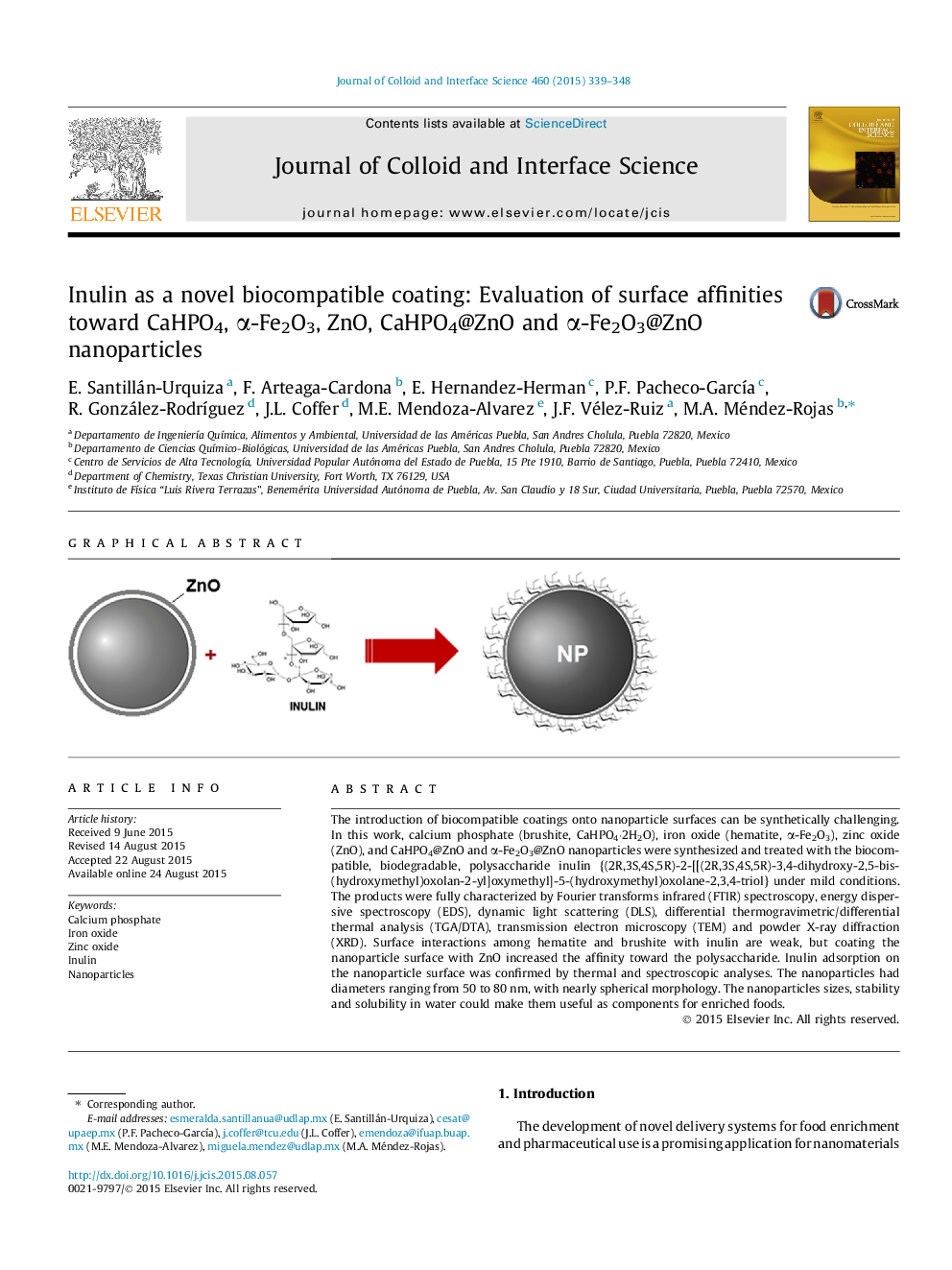| Article ID | Journal | Published Year | Pages | File Type |
|---|---|---|---|---|
| 606568 | Journal of Colloid and Interface Science | 2015 | 10 Pages |
The introduction of biocompatible coatings onto nanoparticle surfaces can be synthetically challenging. In this work, calcium phosphate (brushite, CaHPO4⋅2H2O), iron oxide (hematite, α-Fe2O3), zinc oxide (ZnO), and CaHPO4@ZnO and α-Fe2O3@ZnO nanoparticles were synthesized and treated with the biocompatible, biodegradable, polysaccharide inulin {(2R,3S,4S,5R)-2-[[(2R,3S,4S,5R)-3,4-dihydroxy-2,5-bis(hydroxymethyl)oxolan-2-yl]oxymethyl]-5-(hydroxymethyl)oxolane-2,3,4-triol} under mild conditions. The products were fully characterized by Fourier transforms infrared (FTIR) spectroscopy, energy dispersive spectroscopy (EDS), dynamic light scattering (DLS), differential thermogravimetric/differential thermal analysis (TGA/DTA), transmission electron microscopy (TEM) and powder X-ray diffraction (XRD). Surface interactions among hematite and brushite with inulin are weak, but coating the nanoparticle surface with ZnO increased the affinity toward the polysaccharide. Inulin adsorption on the nanoparticle surface was confirmed by thermal and spectroscopic analyses. The nanoparticles had diameters ranging from 50 to 80 nm, with nearly spherical morphology. The nanoparticles sizes, stability and solubility in water could make them useful as components for enriched foods.
Graphical abstractFigure optionsDownload full-size imageDownload high-quality image (40 K)Download as PowerPoint slide
